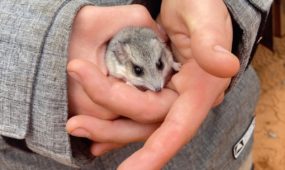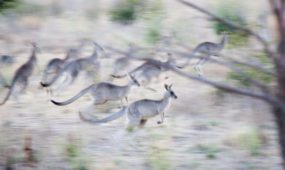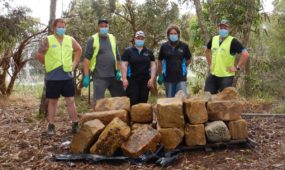Airport crop lowers runway temperatures
Environment
A business case is being finalised for a project to grow a commercial farm crop to reduce runway air temperatures at a major airport in South Australia.

Sign up to receive notifications about new stories in this category.
Thank you for subscribing to story notifications.
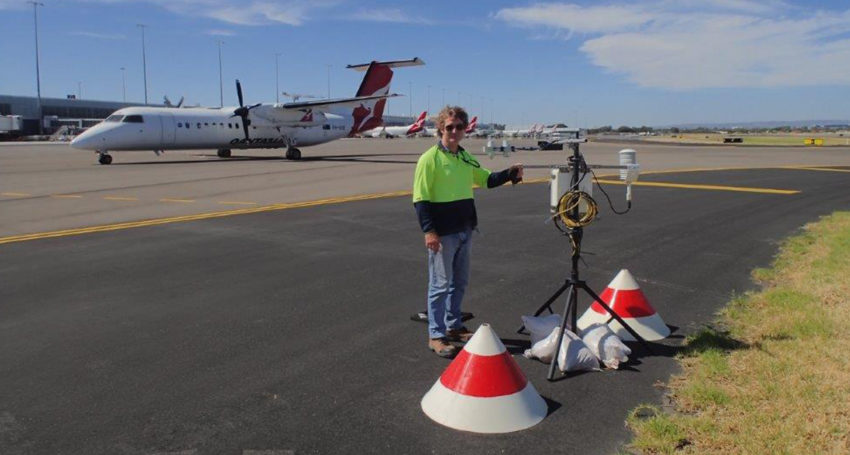
Trials at Adelaide Airport in conjunction with state-owned utility SA Water have been ongoing for the past three years and have shown the cooling effects of lucerne can drop air temperatures by more than 3C on warm days.
In warmer, less dense air, planes must travel faster down the runway to produce the lift needed for take-off. When a runway lacks the distance required to reach these speeds, a plane’s weight must be lowered by removing passengers, luggage and cargo. This reduces profit for the airline.
There is also a threshold temperature above which some smaller domestic aircraft such as the Airbus A330 and Boeing 737 simply cannot take-off.
In a recent example, about 50 flights were cancelled on a day of extreme heat at Phoenix Sky Harbor airport in Arizona in June 2017.
SA Water Environmental Opportunities Manager Greg Ingleton, who developed the world-first Adelaide Airport concept, said the promising findings also had the potential to reduce terminal cooling costs and improve the liveability of cities around the world – especially in hot and dry places like Australia.
He said there may be opportunities to extend the cropping concept to other airports in Australia and internationally.
“No other airport in the world has looked at it from a reducing air temperature perspective,” Ingleton said.
“We’re getting a lot more momentum now, there’s a lot more airport interest and we’ve been contacted by some interstate and international airports.
“The extensive hard surfaces and cleared land around airports means they can often become heatsinks, which has impacts on both terminal and airside operations that need to be managed.
“Jet engines work better in cooler, denser air, using less fuel during take-off and being better able to carry their optimal passenger and cargo loads.”
Adelaide Airport is the fifth-largest domestic airport and sixth-largest international airport in Australia and processes more than 8 million passengers annually.
The 4-hectare trial site is 600 metres south of the airport’s main runway. A number of grass species have been tried, including tall fescue, couch and kikuyu but lucerne, which can be cut into hay and sold as a premium stock feed, had the greatest impact on ambient temperatures.
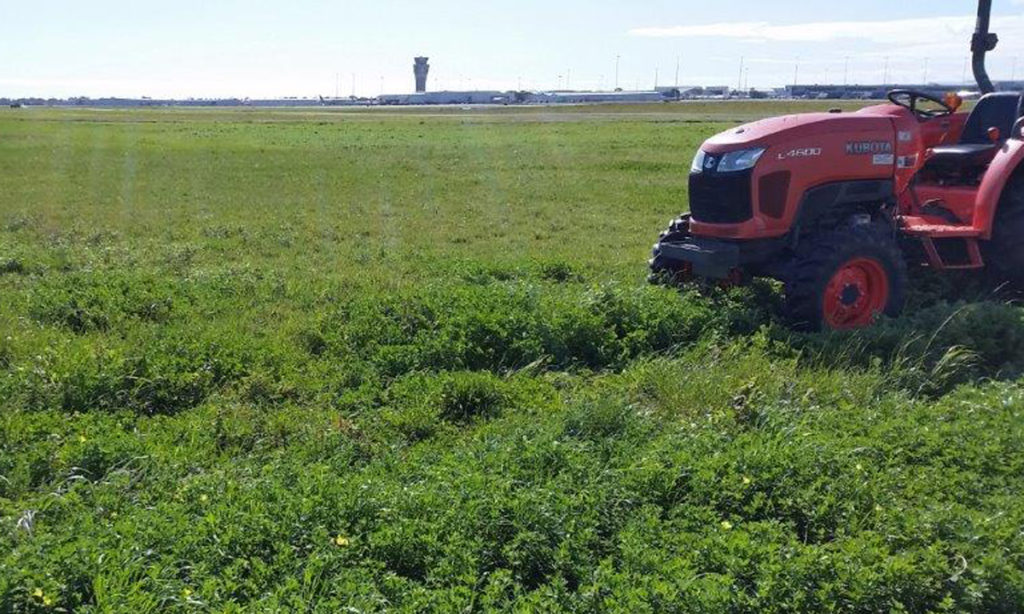
The trial lucerne planting at Adelaide Airport has proven to reduce ambient air temperatures by more than 3C on warm days.
Ingleton said attracting birds to the airport was one of the biggest potential pitfalls with any airport planting project.
“That’s why we took a very temporary approach at first because we wanted to make sure that if we saw an increase in bird activity we could just close the trial down straight away,” he said.
“The airport guys have done the bird surveys and found there was actually a reduction in bird activity in the irrigated area.”
During the trial, between 12 and 15 millimetres of recycled suburban stormwater was applied to the area up to three evenings a week, with more than 40 temperature and humidity sensors monitoring conditions in the irrigation area, and the persistence of cool air outside of the test zone.
This has led to a reduction in average ambient air temperatures of more than 3C on warm days.
The stormwater for irrigation is drawn from a nearby creek catchment during winter and pumped into an underground aquifer as part of the SA Water stormwater harvesting scheme.
Adelaide Airport has the potential for up to 200ha of lucerne and a further 50-100ha of irrigated turf around the main runway and other infrastructure.
A decision on the business case is expected later this year.
Adelaide Airport and SA Water recently engaged economists to determine if lucerne could be used to recoup some of the irrigation and maintenance costs.
The economists extrapolated the costs and benefits of lucerne hay from the trial site to the wider 200ha area at Adelaide Airport, using a conservative and a very conservative scenario. The results showed a payback period of 7–12 years.
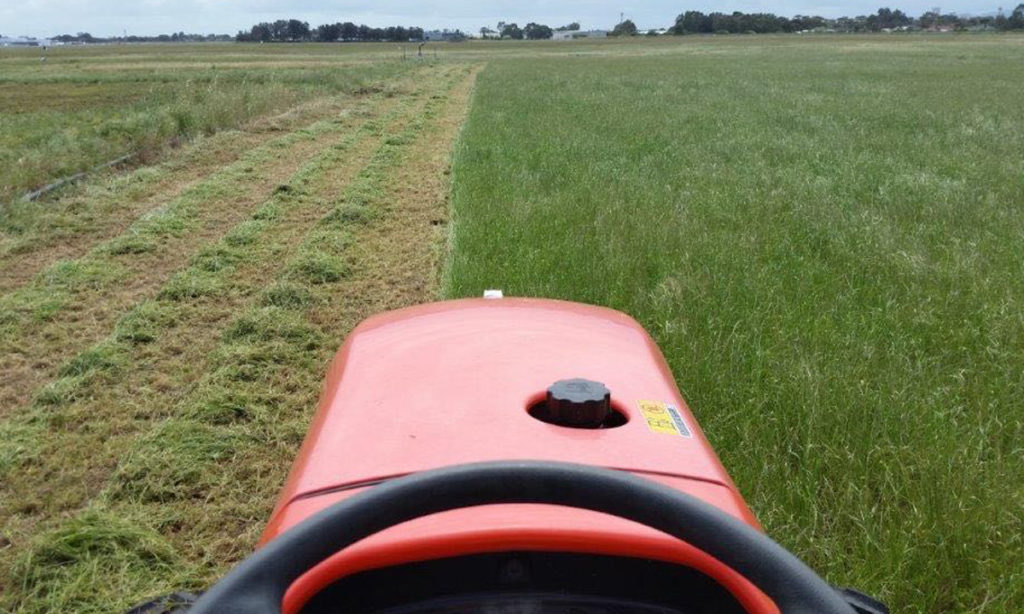
“These results gave us confidence that using airport buffers for cropping could be viable, compared with current maintenance. And best of all, the cooling component is free,” Ingleton said.
“It’s one of those projects where everybody benefits: SA Water will benefit from the sale of the water, the airport will benefit from the sale of the lucerne and a reduction in energy usage, the airlines benefit because of the reduced costs of fuel and mitigating payload reductions
Adelaide is known for its hot, dry summers. The city has experienced 12 days where daytime temperatures exceeded 37C since January 1 including a maximum temperature of 46.6C on January 24.
Ingleton said the next step would be to install a permanent centre pivot irrigation system that would expand the watered area from 4ha to 7ha and allow more lucerne planting to take place.
He said the time it would take to increase the irrigation and planting area to the full 200ha would depend on investment.
“If it was based on the economics of each step such as using the sale of lucerne to fund the next stage then that would be a long process,” Ingleton said.
“But if it was something the airlines latched onto because they see the benefit from it then it could get to that 200-300ha quite quickly.
“One of the other things we are interested in looking at is the ability to get carbon credits for it to make it a carbon farming initiative and that could be a really attractive component for the airlines.”
According to AgriFutures Australia, a well-managed irrigated lucerne stand can produce 15-25 tonnes of lucerne hay per hectare per year from 5-7 cuts, which typically occur between October and April.
“I was cutting it about six times a year so it is a fairly high volume lucerne crop,” Ingleton said.
Adelaide Airport’s Sustainability Manager Leigh Gapp said the potential benefits of the project were numerous.
“There is an exciting opportunity to demonstrate the ability to reduce costs associated with terminal cooling and to maintain and improve aircraft performance on hot and extreme heat days, including reduced fuel use and maintenance of payloads if the cooling persists sufficiently,” he said.
Jump to next article
